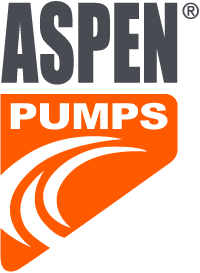
Flexible cooling
As temperatures and humidity levels increase globally, installations of AC systems are set to soar as AC units are accepted as a necessity rather than a luxury the few can access.
When cooling becomes a necessity
The average temperature on the planet in July 2019 was about 1° above the 20th century average, with the last 5 years being the hottest on record.
55% of the world’s population live in urban areas with this due to increase to 68% by the year 2050 according to the UN. Globally, over 4 billion people live in cities and this urban living comes with a multitude of different residential dwellings from sky scrapers to town houses.
This continued urbanisation has seen a rise in installations of split systems, in both commercial and residential settings. Mini splits now take up over half of the HVAC market sales revenue – a market which is expected to be worth over $310 billion by 2026.
Check out our discussion panel on the 'Rise of domestic AC'
Resource: NOAA
Understanding the complete system
Complicated pipe runs, (which traditionally have been used to remove this excess,) can easily become clogged with a build-up of debris and although still used, there is a greater understanding for the need for a more reliable, flexible and aesthetically pleasing solution from professional installation Engineers.
When commissioned with an installation, an Engineer must take into account several factors including siting the unit, air quality, wall thickness, aesthetics and room size to name a few. Engineers can use a condensate removal pump to remove excess water, as they give more flexibility around where a unit can be sited.
Take a look at a variety of pipe run systems and encounters, and how pumps are the perfect solution.
Increased demand for AC = greater demand for condensate removal
55% of the world’s population live in urban areas with this due to increase to 68% by the year 2050 according to the UN. Globally, over 4 billion people live in cities and this urban living comes with a multitude of different residential dwellings from sky scrapers to town houses.
This continued urbanisation has seen a rise in installations of split systems, in both commercial and residential settings. Mini splits now take up over half of the HVAC market sales revenue – a market which is expected to be worth over $310 billion by 2026.
However, as with all AC systems, mini splits also require the removal of condensate water that is generated from the unit in an effective and safe way. The condensate amount can vary depending on the type of environment that the unit is placed in.
Resources: Globe news wire, Mordor intelligence, Statisca, CBE residential, United Nations
Condensate pumps – a total system approach
Multiple AC systems can be integrated into complex building spaces, with the condensate being removed effectively and efficiently with condensate removal pumps. Each condensate pump has been designed for different environments and building requirements, so an Engineer will choose the pump which is most suited to the application.
With a continuing rise in residential installations due in part to recent global events, end users may want systems which fit with the aesthetics of their homes, meaning that the versatility that condensate pumps offer is critical.

Mini Blanc
Under the unit: The ‘ultra quick fit’ Mini Blanc is designed to be fitted beneath high wall indoor units and offers easy access for future maintenance.

Mini Tank
Level with: Benefiting from multiple inlets, the compact Mini Tank is the solution to the problematic challenge of fitting a condensate pump on a ducted unit.
Regular AC maintenance helps improve indoor air quality and system efficiency
With cities becoming more populated and building cooling requirements becoming more complicated as a result, customers need simple solutions for condensate removal. Integrated multiple AC systems in buildings is a real investment, so ensuring that the correct pump is installed which complements the overall HVAC set up is critical to the longevity of the system. Not only this, regular maintenance of the system and its pump will also ensure that the system continues to function efficiently.
Mini pumps such as the Mini Blanc come with an easy to remove reservoir which means that maintenance is quick and straightforward, allowing for more time to concentrate on the complete system, rather than one component. Although most PPM schedules are guided by customers and can be as sparse as an annual service, many Engineers will encourage customers to have regular maintenance of their systems to ensure that the systems and pumps are working to the highest efficiency possible.

Industry next steps
The latest figures from Statisitica show that there are an estimated 1.9 billion AC units in the world and that this number will increase. With this increase, the industry needs to ensure that installation best practice continues for the next generation of Engineers.
A recent discussion group showed that veteran Engineers are willing to pass this best practice information on, to support apprentices in learning the key critical elements that make up a successful installation. Not only that, Aspen Pumps has donated hundreds of mini pumps to HVAC/R training colleges, with digital learning aids so that apprentices not only learn from the best but learn on the best equipment.
This combined effort will ensure that future Engineers become the professionals of the future that the industry needs.
Find out about a campaign we have been running with colleges to help support our industry.










